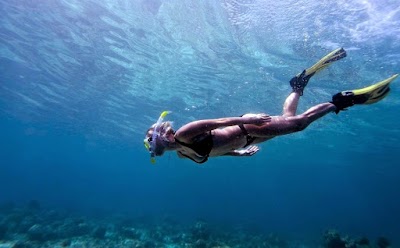Baleine Rocks (Rochers Baleine)
Overview
Baleine Rocks, located in the stunning Saint Brandon Islands of Mauritius, is a breathtaking natural formation that showcases the incredible artistry of nature. Nestled in the vast Indian Ocean, this archipelago is a mesmerizing collection of coral islands and reefs, with Baleine Rocks standing out not only for its striking appearance but also for the rich geological narrative it embodies.
Geological Marvels
These magnificent rocks are primarily made of limestone and coral, shaped over countless millennia by the relentless forces of waves, wind, and fluctuating sea levels. The origins of this unique formation can be traced back to ancient times when the area that is now the Indian Ocean experienced significant tectonic transformations. As ocean currents and waves relentlessly eroded the coastlines, these rocks were gradually sculpted into the awe-inspiring forms we see today.
The Story Behind the Name
The name "Baleine Rocks" translates to "Whale Rocks" in English, aptly given due to their resemblance to a whale emerging gracefully from the ocean depths. Early sailors and explorers relied on these distinctive landmarks for navigation, and the name has endured through the centuries, connecting generations to the island's natural heritage.
Cultural Significance
For the people of Mauritius, including local fishermen and the occasional visitors to the Saint Brandon Islands, Baleine Rocks hold a special place in their hearts. Not only is it a captivating visual spectacle, but it also serves as a powerful reminder of nature's extraordinary forces. These rocks stand as a testament to the enduring beauty and resilience of the natural world, thriving despite continuous environmental challenges.
Scientific Interest
Baleine Rocks captivates scientists and geologists alike, as they serve as prime examples of marine erosion and coral growth. By studying these formations, researchers gain valuable insights into historical sea levels, climate fluctuations, and the geological history of the region. The knowledge acquired here plays a crucial role in enhancing our understanding of Earth's dynamic systems.
Ecological Importance
Beyond their geological significance, Baleine Rocks symbolize the delicate balance of marine ecosystems. The surrounding waters are teeming with vibrant marine life, including colorful fish, playful sea turtles, and diverse coral species. These rocks also provide crucial habitats for numerous seabirds and other wildlife, highlighting the need for their preservation.
Conservation Efforts
In recent years, significant efforts have been made to safeguard this stunning natural landmark from the impacts of pollution, overfishing, and climate change. Conservation initiatives are in place to ensure that Baleine Rocks and the surrounding waters remain pristine, allowing future generations the opportunity to admire and study this extraordinary site.
So, the next time you find yourself gazing at the striking silhouette of Baleine Rocks amidst the tranquil waters of the Saint Brandon Islands, take a moment to reflect on the incredible journey that brought them into existence. These rocks are not merely beautiful; they are ancient storytellers, sharing tales of a world in constant motion, shaped by the timeless elements of earth, water, and air.





